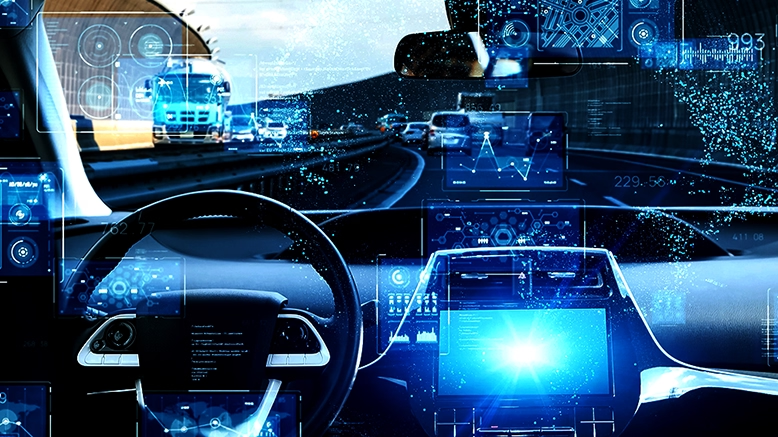Software-Defined Vehicles and the Power of Imaging Radar

In recent years, the automotive industry has witnessed remarkable advancements driven by the integration of software and cutting-edge technologies. One of the most exciting developments is the emergence of software-defined vehicles (SDVs), which are poised to transform transportation as we know it. SDVs are vehicles that rely heavily on software systems and algorithms to control various functions traditionally handled by hardware components. This paradigm shift in automotive engineering opens up a world of possibilities, and one technology that seamlessly aligns with this trend is imaging radar.
In this blog post, we will delve into the concept of software-defined vehicles and explore the pivotal role imaging radar plays in enhancing their capabilities. We will discuss the advantages of SDVs and how imaging radar technology contributes to safer and more efficient transportation systems.
Software-Defined Vehicles: A New Era in Transportation
Software-defined vehicles encompass a wide range of vehicles, from autonomous cars to advanced driver-assistance systems (ADAS). These vehicles leverage powerful onboard computers, sophisticated algorithms, and artificial intelligence (AI) to enable various functions such as perception, decision-making, and control.
The traditional approach to vehicle design relies on specialized hardware components for each function. SDVs, on the other hand, shift the focus towards software, making it easier to introduce new features, improve performance, and adapt to changing requirements through over-the-air updates. This flexibility allows automakers to continuously enhance vehicle capabilities, enhance safety features, and address emerging challenges.
Imaging Radar: Transforming Perception and Safety
Imaging radar is an advanced sensing technology that utilizes radio waves to detect and perceive the surrounding environment. It plays a vital role in SDVs by providing crucial data on the vehicle's surroundings, including the detection of objects, pedestrians, and other vehicles, even in adverse weather conditions or low visibility scenarios. Here are some ways imaging radar enhances SDVs:
- Object Detection and Tracking: Imaging radar offers a wide field of view and can accurately detect and track objects in real-time. By providing precise data about the position, speed, and trajectory of nearby objects, it enables SDVs to make informed decisions, predict potential collisions, and implement necessary avoidance maneuvers.
- Distance and Speed Measurement: Imaging radar enables accurate measurement of distances between the vehicle and other objects in its vicinity. By combining this data with speed measurement capabilities, SDVs can maintain safe distances, adjust their speed, and execute smooth and efficient maneuvers.
- Adverse Weather Performance: Other sensors, such as cameras or lidar, face limitations in challenging weather conditions like heavy rain, fog, or snow. Imaging radar, however, is less affected by such factors. Its ability to penetrate atmospheric conditions allows SDVs to maintain perception and operate reliably even in unfavorable environments.
- Redundancy and Safety: Building redundancy into autonomous systems is crucial for safety. By combining multiple sensor modalities, including imaging radar, lidar, cameras, and ultrasonic sensors, SDVs create a comprehensive perception framework. If one sensor encounters issues or fails, the others can provide backup data, ensuring the continued safe operation of the vehicle.
The Future of SDVs and Imaging Radar
As technology continues to evolve, the integration of SDVs and imaging radar will play an increasingly important role in shaping the future of transportation. The ongoing advancements in imaging radar technology, including higher resolution, increased detection range, and improved accuracy, will further enhance the capabilities of SDVs.
Moreover, the use of AI and machine learning algorithms in processing the vast amounts of data generated by imaging radar systems will lead to more sophisticated perception and decision-making capabilities. This will enable SDVs to navigate complex scenarios, interact seamlessly with other vehicles, and adapt to dynamic environments with greater precision. Additionally, the OTA model allows SDVs to receive automatic updates, ensuring they always have the latest version of software or firmware. This capability contributes to the advancement and improvement of the entire self-driving vehicle ecosystem.
Software-defined vehicles are revolutionizing transportation by leveraging the power of software systems and algorithms. In this context, imaging radar technology plays a pivotal role in enhancing the perception capabilities and safety of SDVs. By providing accurate object detection, distance measurement, and reliable performance in adverse weather conditions, imaging radar ensures that SDVs can operate efficiently and safely in various scenarios.
The ongoing progress in imaging radar technology and its integration with other sensor modalities will continue to push the boundaries of SDVs. As we move toward a future where autonomous driving becomes more prevalent, imaging radar will be instrumental in shaping a world of safer and more efficient transportation systems.

